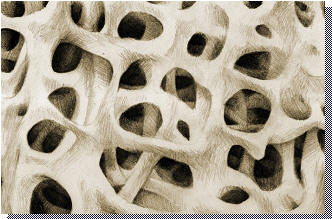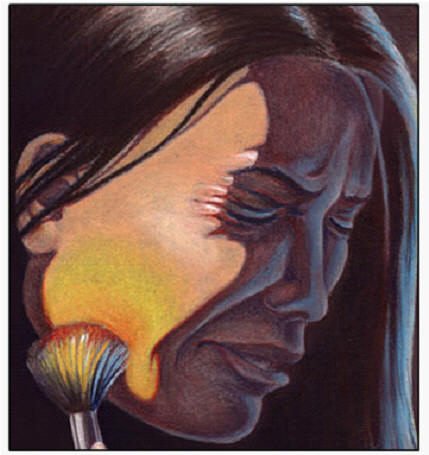|








































last
updated
June 19, 2009
 
................................
Other areas of
Expertise:
Gamma Knife
Normal Pressure-
Hydrocephalus

Osteoporosis: Prevent/Reverse It

Trigeminal Neuralgia

| |
|
-
Scott et al, in Spine 1999, learned "that smokers have
more frequent episodes of back pain may imply that smoking
exacerbates back pain, and the observation that stronger
associations between back pain and smoking were found in the
scoliosis cohort suggests that smoking may have a greater impact on persons
with damaged spines."
-
Shah reports, in Spine ,Feb 2002,
that sacral stress fractures in athletes, can be a cause of low back pain, and
this is usually not considered in the diagnostic workup. He reports a 16
year old who suffered a sacral stress fracture playing volleyball, and was
successfully treated with non steroidal antiinflammatory medications.
-
Lang , in Schmerz (Feb 2002)
found that a multimodal treatment of low back pain, 4 hours per day for 20
days, consisting of medical training therapy, cognitive behavioral therapy,
physiotherapy and patient education, organized in a private health oriented
sports center with three physiotherapists, a psychologist and a pain
specialist, improved outcomes.
-
Cohen, in Sports Medicine (2002
;32(1)) evaluated agressive exercise as a treatment for chronic low back pain.
He found that "by eliminating impairments in back function, altering
fears and beliefs about pain, and reducing disability, patients with
chronic low back pain can achieve meaningful improvements
in their quality of life."
-
Gatterman, in the Journal of
Manipulative Physiol Ther, Sept 2001, wrote "The four conditions rated most
amenable to chiropractic treatment were noncomplicated low
back pain, sacroiliac joint dysfunction, posterior joint/subluxation,
and low back pain with buttock or leg pain."
He concluded " the ratings for the effectiveness of chiropractic
technique procedures for the treatment of common low back
conditions are not equal. Those procedures rated highest are supported by the
highest quality of literature. Much more evidence is necessary for
chiropractors to understand which procedures maximally benefit patients
for which conditions."
-
Han, in Int J Obes Relat Metab
Disord (Jul 1997) found: "Women who are overweight or with a large waist have
a significantly increased likelihood of low back pain.
There are no significant interactions between waist and height, or waist to
hip ratio and body mass index on low back pain symptoms."
-
Strauss, in Geriatrics (Nov 1997)
reported: "Common orthopedic problems in sedentary midlife patients are
shoulder impingement, low back pain, and plantar
fasciitis. Although the responsibility for maintaining an exercise program
rests with the individual, the primary care physician can play an important
role as coach, cheerleader, and respected advisor. The key is to encourage
patients to initiate a program of regular, moderate exercise 30 minutes a day,
three times a week, and to eat a balanced, nutritious diet."
-
Mauro, in Eur Rev Med Pharmacol
Sci (May-June 2000) eveluated 60 patients between 18 and 65 years, with
lumbago or sciatic neuritis of mechanical origin, without the need for
surgery. Back pain had been present from 6 mos to 5 years. He
concluded "The efficacy and safety of parenteral Vitamin B12 in alleviating
low back pain and related disability and in decreasing the
consumption of paracetamol was confirmed in patients with no signs of
nutritional deficiency."
-
Paajanen, in Arch Orthop Trauma
Surg (1997), studied lumbar disc degeneration in subjects suffering from low
back pain. He concluded that "The percentage of subjects with
degenerated discs increased with age; starting from the age of 15 years, this
increase was more rapid in subjects with low-back pain.
Concurrently, the number of degenerated discs was higher in the pain
group than in controls. Lumbar disc degeneration manifests earlier and in a
greater percentage of subjects with low-back pain than in
asymptomatic controls."
-
In my practice, I find that the
radiologists will very often discover many levels of degenerative changes in
the spines of my patients. This a cause of great consternation for many.
We all would like to think our spines are healthy, and this causes worry for
many. I am pleased with the findings of Kikuchi, from the Dept of
Orthopedic Surgery in the Fukushima Medical School, Japan. In Semin
Musculoskelet Radiol (Jun 2001) he wrote " MR imaging has a significant
diagnostic value, but abnormal findings revealed by MR imaging do not always
cause symptoms. MR imaging findings should be confirmed by subjective
symptoms, objective findings, and functional diagnostic procedures."
-
For a surgical perspective,
Leufven, from Gothenburg, Sweden, wrote in Spine (Oct 1999). He studied
29 patients who had low back pain, chronic and disabling, and suffering for
over 2 years. After appropriate testing and selection of surgical
candidates, he performed a a posterior lumbar interbody fusion, posterolateral
fusion, and pedicle screw instrumentation. He found : "There was a
highly significant reduction in back and leg pain measurements.
Of the 29 patients, the results were excellent in 9 patients (31%), good in 6
patients (21%), fair in 6 patients (21%), and poor in 8 patients (27%). A
total of 18 patients (62%) had returned to work. CONCLUSION: The authors
consider posterior lumbar interbody fusion with concurrent
posterolateral fusion and pedicle screw instrumentation a possible method for
managing chronic disabling low back pain."
-
There is a group of patients who
have had long term chronic low back and lower extremity pain. Dorsal
column stimulation, that is electrical stimulation of the lower portion of the
spinal cord, has been shown to be effective. Villavicencio, from the
Division of Neurosurgery at Duke University (Neurosurgery Feb 2000)
concluded " Spinal cord stimulation is an effective treatment for
chronic pain in the lower back and lower
extremities that is refractory to conservative therapy. Electrodes placed via
laminectomy in the thoracic region appear to be associated with significantly
better long-term effectiveness than are electrodes placed percutaneously."
-
Accupuncture is one of the
alternative forms of treatment of low back pain. In Spine (1999, Jun),
van Tulder, from the Institute for Research in Extramural Medicine,
Amsterdam, The Netherlands, reported on eleven randomized controlled trials.
His conclusions were "Because this systematic review did not clearly indicate
that acupuncture is effective in the management of back pain,
the authors would not recommend acupuncture as a regular treatment for
patients with low back pain. There clearly is a need for
more high-quality randomized controlled trials."
|
|

